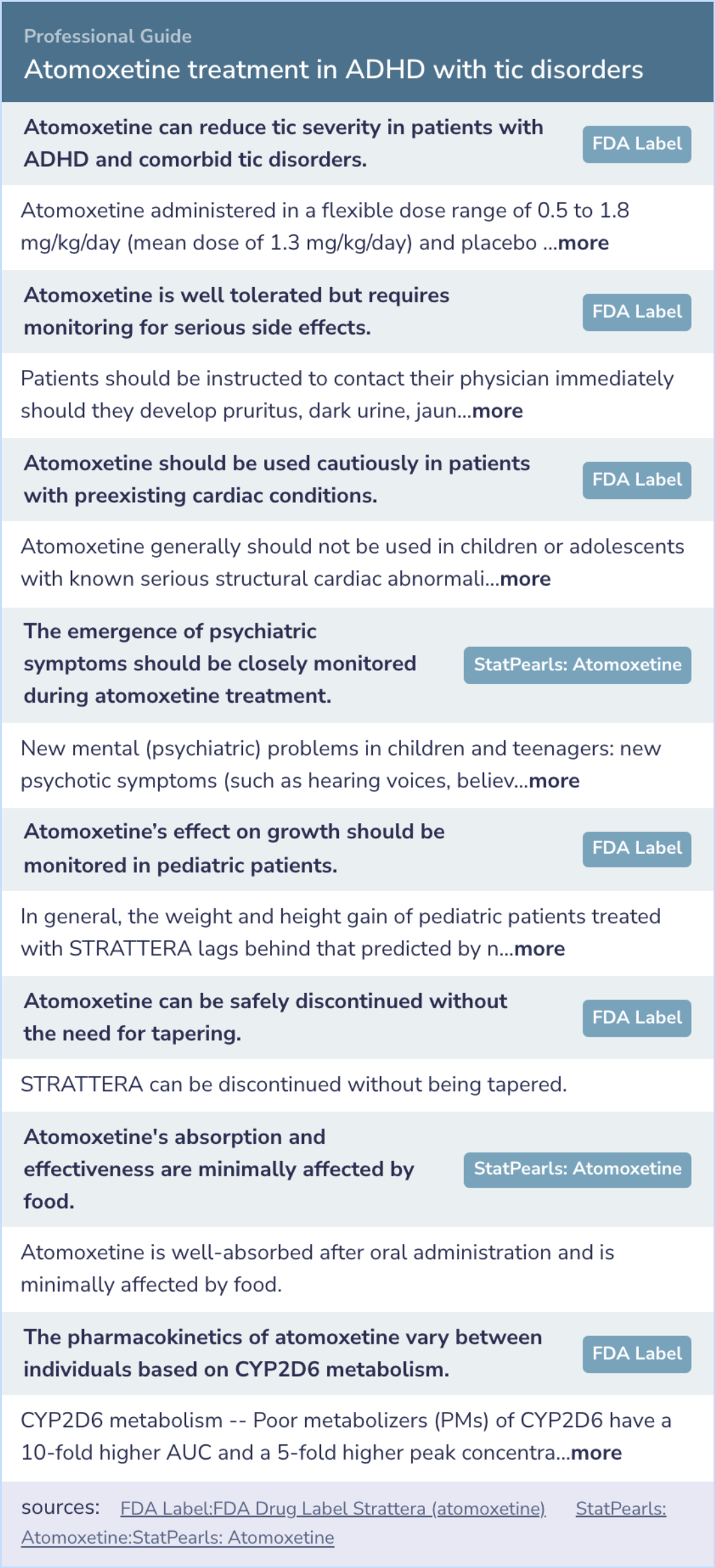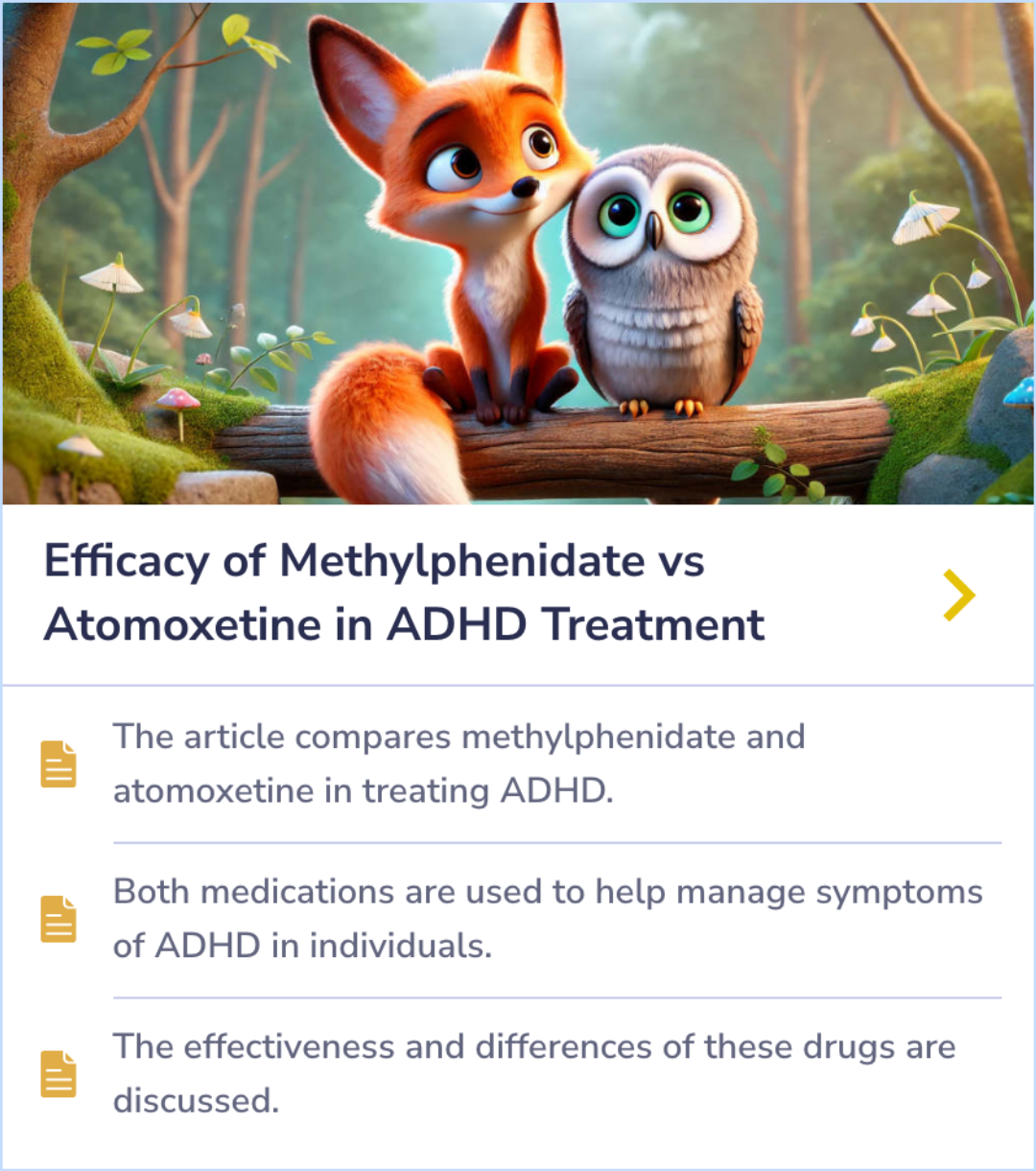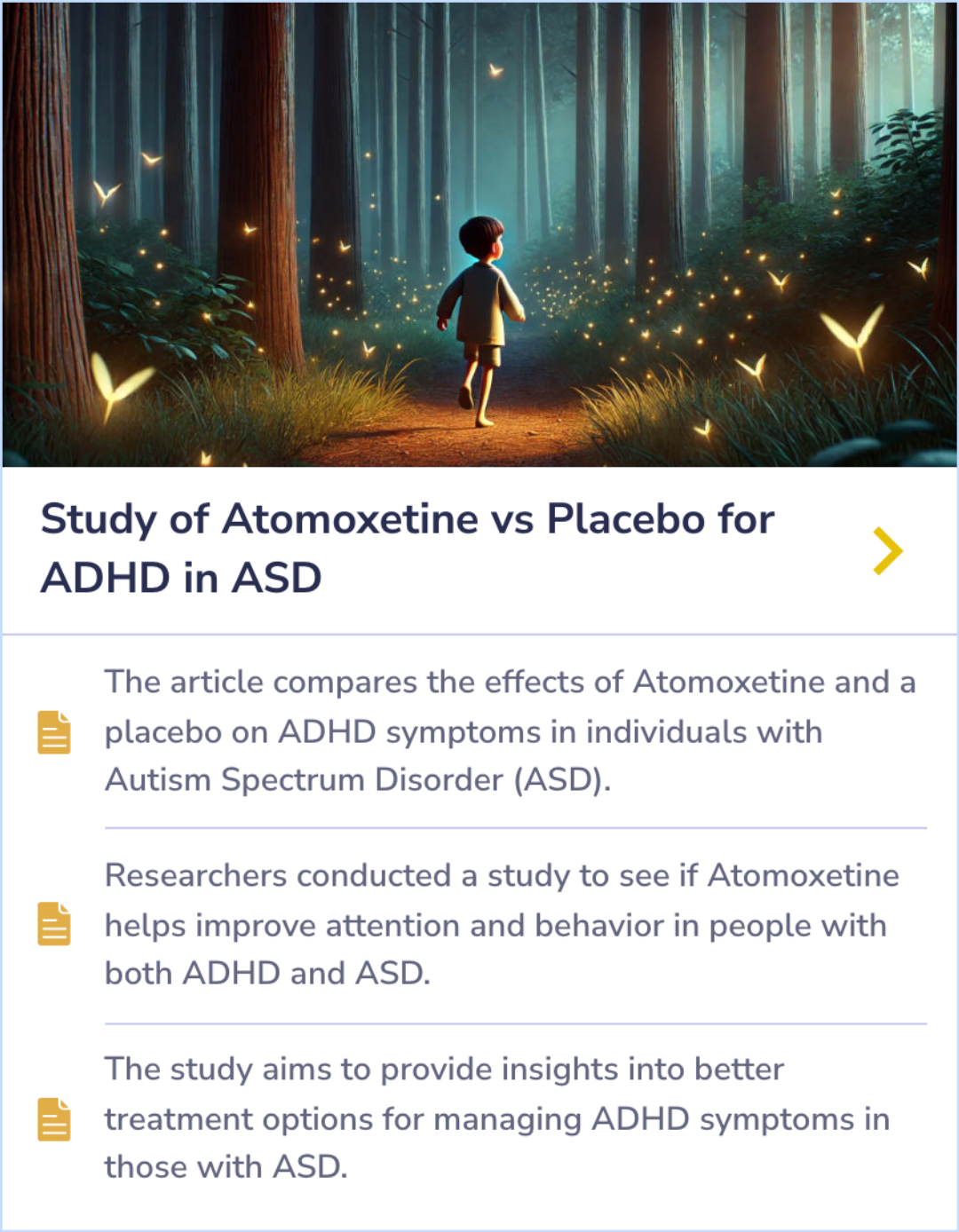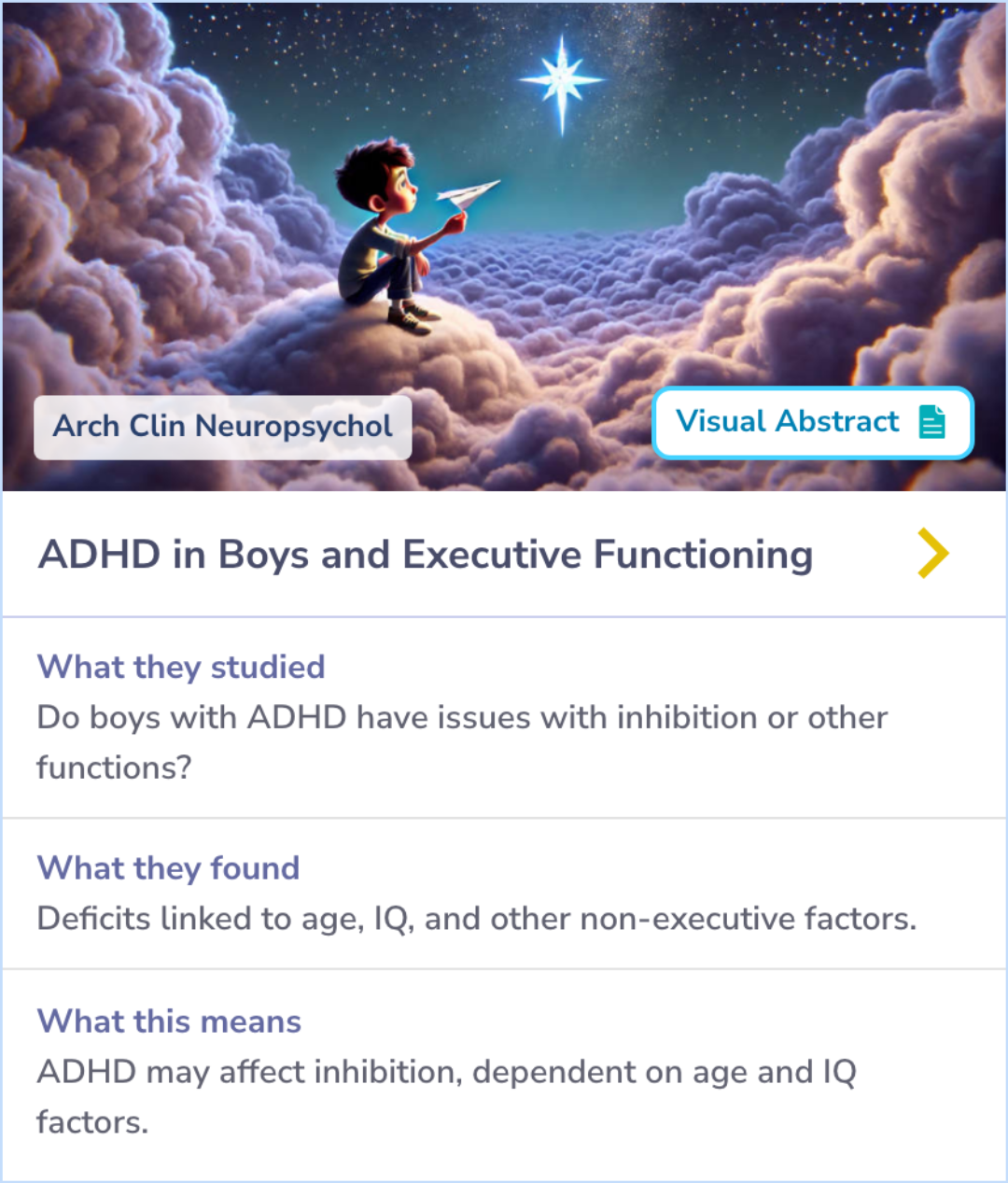Strattera Paper Database
Visual Abstract
Atomoxetine treatment in children and adolescents with ADHD and comorbid tic disorders
Atomoxetine treatment in ADHD with tic disorders
October 25, 2024
author
Allen AJ, Kurlan RM, Gilbert DL, Coffey BJ, Linder SL, Lewis DW, Winner PK, Dunn DW, Dure LS, Sallee FR, Milton DR, Mintz MI, Ricardi RK, Erenberg G, Layton LL, Feldman PD, Kelsey DK, Spencer TJ
journal
Neurology
Date Published
2005 Dec 27
Why link to a visual abstract?
What is a visual abstract?
Original
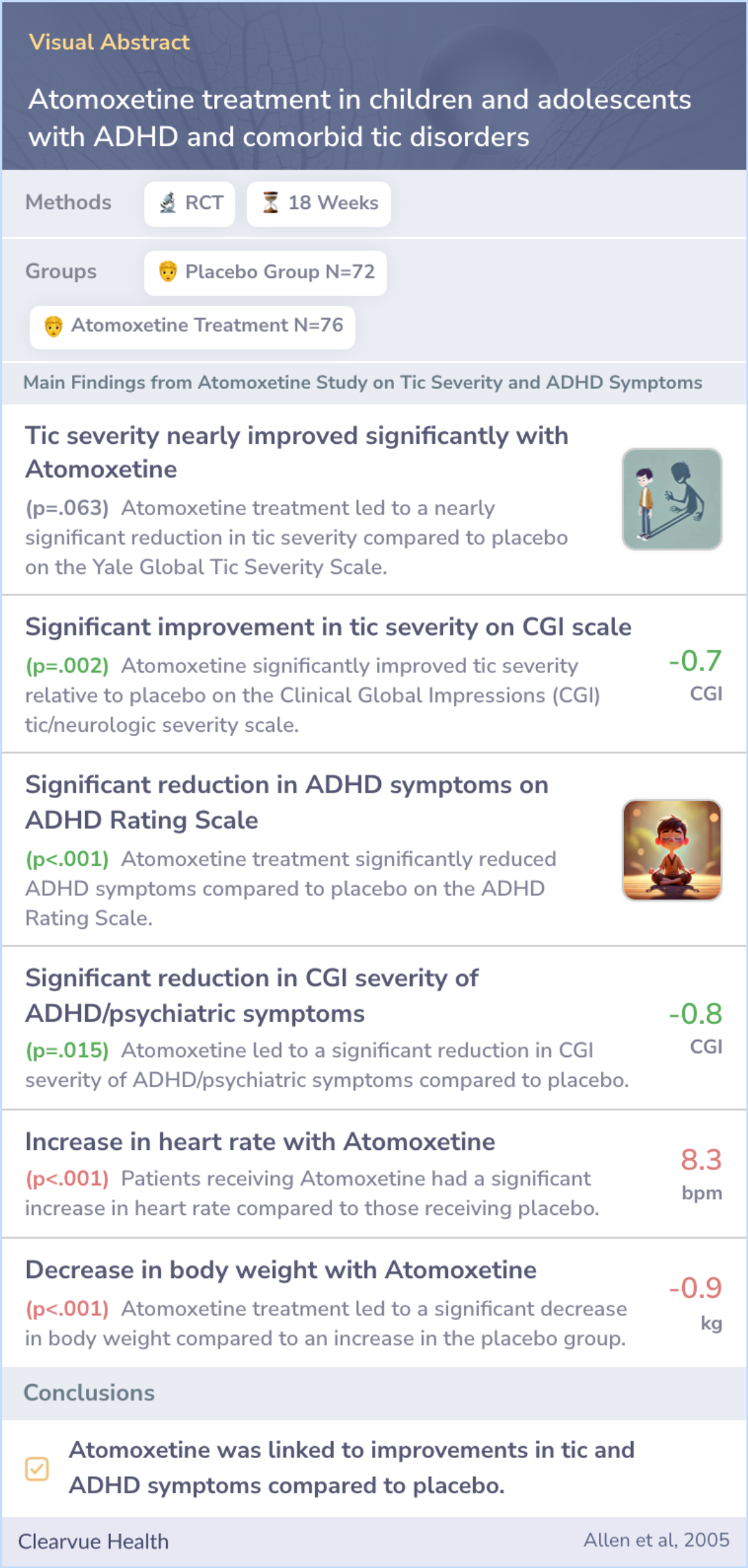
Study Summary
🔬
What They Studied
The study investigated if atomoxetine worsens tic severity compared to a placebo in children and adolescents with ADHD and tic disorders.
💡
What They Found
Atomoxetine was associated with an improvement in tic severity and ADHD symptoms, with significant reductions compared to placebo.
📚
What This Means
These findings suggest that atomoxetine does not worsen tic symptoms and may even improve them alongside ADHD symptoms, aligning with current evidence that supports its use for ADHD treatment.
Study Summary
Study Overview
This study aimed to determine whether atomoxetine could effectively treat ADHD in children without worsening tic symptoms. The findings suggest that atomoxetine not only helps manage ADHD symptoms but also shows a trend towards reducing tic severity. This opens up new possibilities for those who have ADHD along with tic disorders.
The study challenges previous beliefs about traditional stimulant medications and highlights atomoxetine as a potential safer treatment option for these children.
The study challenges previous beliefs about traditional stimulant medications and highlights atomoxetine as a potential safer treatment option for these children.
Abstract: background
To test the hypothesis that atomoxetine does not significantly worsen tic severity relative to placebo in children and adolescents with attention deficit/hyperactivity disorder (ADHD) and comorbid tic disorders.

Efficacy of Atomoxetine
"This study demonstrates that atomoxetine is effective in treating ADHD symptoms without worsening tics, which is a significant concern for children with ADHD and comorbid tic disorders."
Potential for Change
"The significance of this study lies in its potential to change the approach to treating ADHD in patients with comorbid tics, providing a safer and potentially more effective option."
Tic Improvement Trend
"The trend toward tic improvement identified in this study suggests that atomoxetine may be beneficial for treating tics in addition to ADHD."
Study Summary
Methods
The research involved children aged 7 to 17 diagnosed with both ADHD and either Tourette syndrome or chronic motor tic disorder. They were randomly assigned to receive either a placebo or atomoxetine, which is commercially sold as Strattera, over 18 weeks.
This double-blind approach means neither the subjects nor the researchers knew who received the medication versus the placebo, reducing bias in observed outcomes.
This double-blind approach means neither the subjects nor the researchers knew who received the medication versus the placebo, reducing bias in observed outcomes.
Abstract: methods
Study subjects were 7 to 17 years old, met Diagnostic and Statistical Manual of Mental Disorders-IV criteria for ADHD, and had concurrent Tourette syndrome or chronic motor tic disorder. Patients were randomly assigned to double-blind treatment with ...more

Study Summary
Results
The results showed atomoxetine improved tic severity better than a placebo, indicated by scores on various scales evaluating tics. Notably, improvement was significant on the Clinical Global Impressions scale for tic severity. Improvements in ADHD symptoms were also notable, with more reduction in ADHD-related scales.
Though some side effects like increased heart rate and decreased appetite were noted, discontinuation rates were similar, suggesting atomoxetine's tolerability.
Though some side effects like increased heart rate and decreased appetite were noted, discontinuation rates were similar, suggesting atomoxetine's tolerability.
Abstract: results
Atomoxetine treatment was associated with greater reduction of tic severity at endpoint relative to placebo, approaching significance on the Yale Global Tic Severity Scale total score (-5.5 +/- 6.9 vs -3.0 +/- 8.7, p = 0.063) and Tic Symptom Self-Rep...more
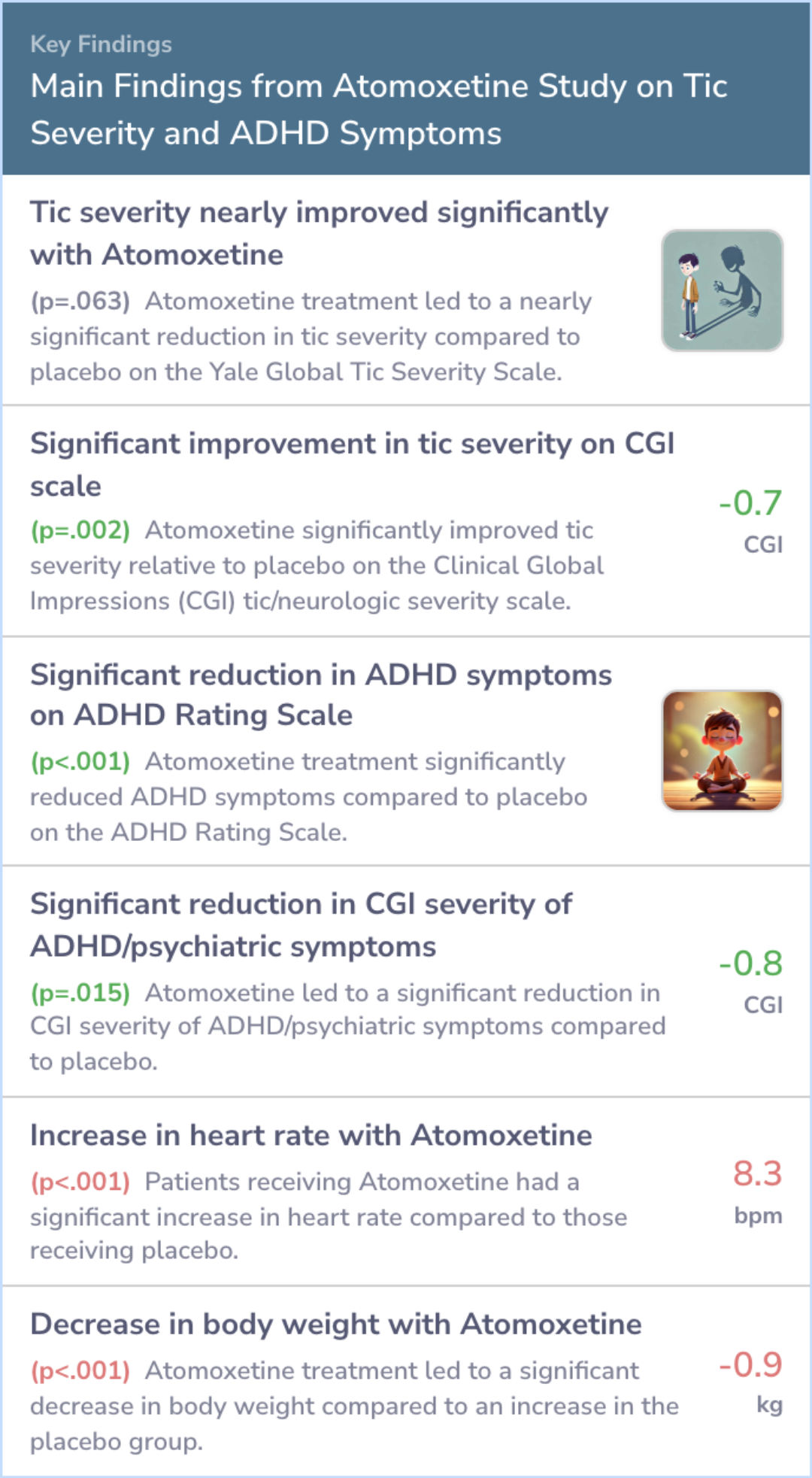
Study Summary
Conclusions
Atomoxetine did not worsen tic symptoms; in fact, there was evidence suggesting a reduction in tic severity alongside notable ADHD symptom improvement. This outcome emphasizes the medication's dual benefits.
Overall, atomoxetine was considered safe and tolerable, offering hope for patients needing treatment for both ADHD and tic disorders without escalating their tic conditions.
Overall, atomoxetine was considered safe and tolerable, offering hope for patients needing treatment for both ADHD and tic disorders without escalating their tic conditions.
Abstract: conclusions
Atomoxetine did not exacerbate tic symptoms. Rather, there was some evidence of reduction in tic severity with a significant reduction of attention deficit/hyperactivity disorder symptoms. Atomoxetine treatment appeared safe and well tolerated.
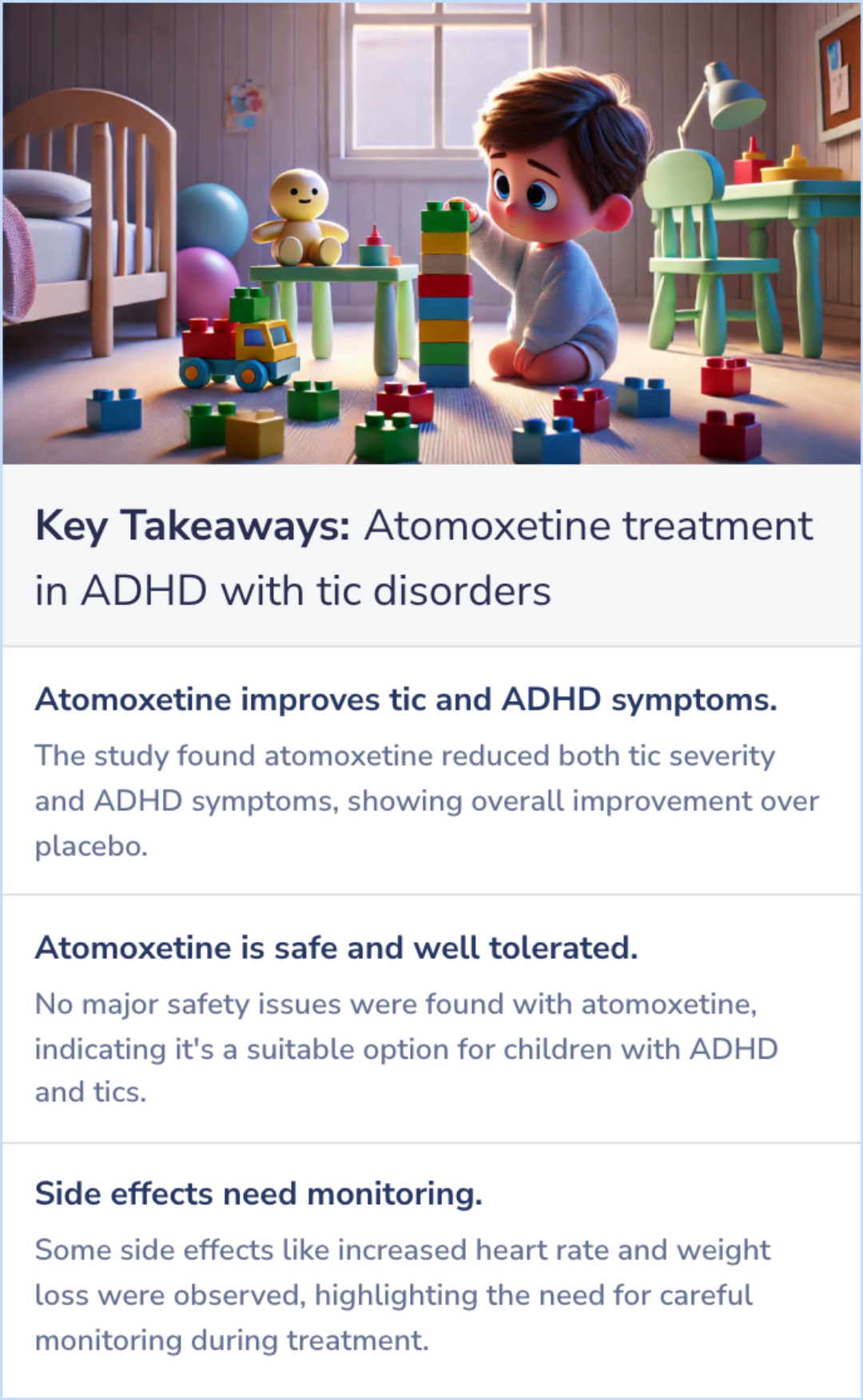
Background Information
Patient Guide
💊
FDA-Approved Use
Atomoxetine is approved for ADHD in children over six, beneficial for ADHD patients with tic disorders.
⚙️
Mechanism of Action
As a norepinephrine reuptake inhibitor, atomoxetine affects regions linked to ADHD symptoms and tic suppression.
🔢
Special Dosage Considerations
Atomoxetine requires weight-based dosage adjustments in children, relevant for the study's age group.
🤕
Adverse Effects Monitoring
Common side effects include nausea and appetite changes; crucial for young patients with ADHD and tic disorders.
📏
Growth Monitoring
Regular checks for height and weight are essential, an important consideration for long-term atomoxetine use.
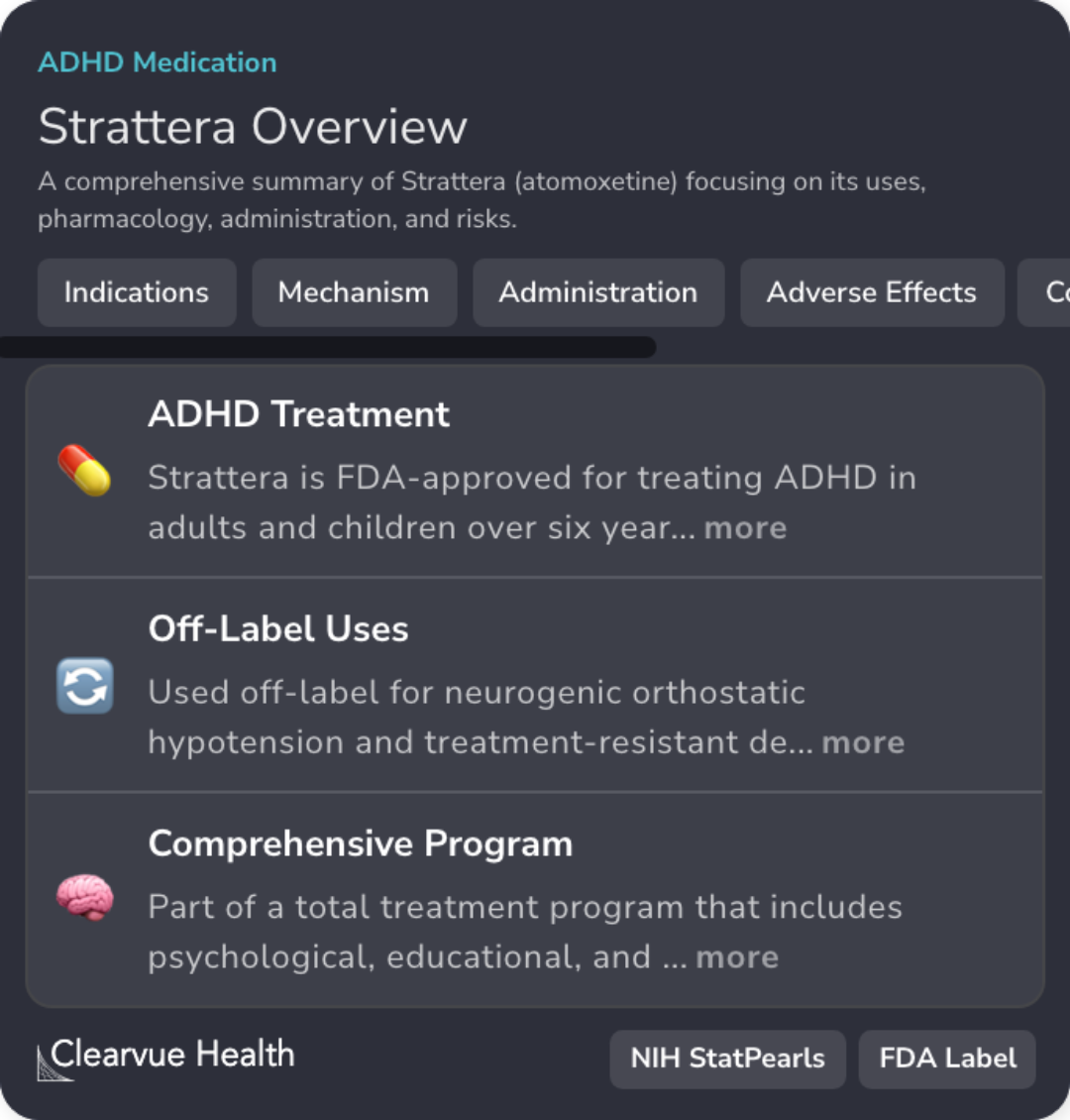
Professional Guide
Expert Opinion: Atomoxetine treatment in ADHD with tic disorders
The findings align with the current understanding of atomoxetine's efficacy and safety in treating ADHD with comorbid tic disorders. Atomoxetine showed potential in reducing tic severity without significant adverse effects, which is reflected in the clinical guidelines provided.
Close monitoring is emphasized, especially for cardiac conditions and psychiatric symptoms, to ensure safe administration of the medication.
Close monitoring is emphasized, especially for cardiac conditions and psychiatric symptoms, to ensure safe administration of the medication.
Evidence Summary
Methylphenidate vs. Atomoxetine: Comparing Treatment Effects in ADHD
The comparison explores the roles of methylphenidate and atomoxetine in managing ADHD symptoms, focusing on how these medications differ in their effectiveness. It dives into which drug may offer more benefits to individuals with ADHD, breaking down the nuances in their treatment approaches.
This side-by-side analysis highlights the distinct characteristics of each drug, providing insight into their specific effects on ADHD symptoms.
This side-by-side analysis highlights the distinct characteristics of each drug, providing insight into their specific effects on ADHD symptoms.
Evidence Summary
Atomoxetine's Impact on ADHD Symptoms in ASD
The study compared Atomoxetine with a placebo to see if it could improve attention and behavior in individuals with Autism Spectrum Disorder (ASD) who also have ADHD. Researchers explored whether Atomoxetine offers better treatment strategies for managing ADHD symptoms in this group.
The findings focus on how Atomoxetine affects ADHD symptoms in people with ASD, aiming to identify more effective approaches for managing these conditions together.
The findings focus on how Atomoxetine affects ADHD symptoms in people with ASD, aiming to identify more effective approaches for managing these conditions together.
Evidence Summary
ADHD and Executive Function Deficits in Boys
Exploring the behaviors and characteristics of boys with Attention Deficit/Hyperactivity Disorder, this study examines whether their challenges lie primarily in response inhibition or span across other executive functions. Various factors like age, IQ, and performance on non-executive function tasks are considered, revealing that ADHD-related deficits aren't independent of these variables. Interestingly, different inhibition types show only low correlations, questioning their independence.
